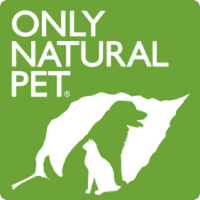What You Need to Know: Pet Food Recalls, Food Safety and Regulations
Written by: Aaron I
Pet Food Recalls & Food Safety Issues:
As many dog guardians well remember, mid-March marks the two-year anniversary of the widespread pet food recall throughout North and South America. Most dog parents are familiar with the FDA’s recall due to the melamine contamination from ingredients sourced in China, and many people’s pets were affected by the tainted food.
While much smaller in scope since the 2007 recall, dog food recalls continue, including last month’s peanut butter Salmonella contamination that affected both human and dog food products. (We are happy to report that none of the peanut butter dog treats we carry were involved in the recall.) For the latest information on food recalls and safety concerns, visit the US Food & Drug Administration’s Food Recall page on their website.
To summarize events since the 2007 recall, while the US FDA (responsible for pet food regulations, which are enforced at the state level) has taken some action toward improving response and tracking of pet food safety crises, and committees have been formed to further define safety standards for our pets’ food, no legislation has yet been passed to impose stricter rules for pet food safety and ingredient testing.
It seems likely that there will be no additional federal regulations enacted, as many industry insiders believe that existing laws and safety protocols adequately address pet food safety needs, and there is often general resistance to expanding governmental controls in big businesses like the pet food industry.
Instead of new federal legislation, there will likely be stricter “guidelines” made by the Association of American Feed Control Officials (AAFCO), the agency that (loosely) regulates the pet food and livestock feed industry by setting feed standards and definitions of acceptable feed and pet food ingredients. More information on dog food regulation is available here on the AAFCO website.
What this means for pet parents is that nothing much is likely to change in the near future. The responsibility for providing safe foods to our canine companions remains where it always has been – squarely on our own shoulders! The best way to ensure you’re getting a safe food for your dog is to choose a natural dog food from our extensive selection. And of course, it’s just as important to select natural treats for your dog as well.
On a related note, we often hear from our customers a common misconception about the AAFCO statement found on most dog foods: the idea that AAFCO approves foods, and that the AAFCO statement on a dog food label guarantees safety. AAFCO offers guidelines for dog food and livestock feed manufacturers, but does not actually approve or strictly regulate what goes into our dogs’ food. The AAFCO statement simply says that the manufacturer avows that their food contains the AAFCO-recommended minimum requirements of all nutrients necessary to sustain life for a particular species of animal.
So if your dog’s food meets the AAFCO guidelines, the statement on the label says that the food is “formulated to meet the nutritional levels established by the AAFCO Dog Food Nutrient Profiles.” This means that dogs eating the food as
their whole diet won’t die from a nutrient deficiency. It does not mean that the ingredients in the food are of high quality, are easy to digest, or are at all healthy for your canine! Dogs are developing serious health problems like cancer, and kidney & liver diseases at alarming rates since commercial dog food was introduced – just a coincidence? We think not! Just because a food meets AAFCO guidelines doesn’t mean it’s especially healthy for your animal to eat.
In fact, many of the AAFCO-approved ingredients in dog food are considered quite unhealthy by those who know what the tricky ingredient language really means. Acceptable dog food ingredients include things like beaks and chicken feet (poultry by-products), sawdust, peanut or soybean hulls and newspaper pulp (powdered cellulose), rendered road kill (animal fat, animal digest), and worse!
Interestingly, the melamine that harmed in so many pets in 2007 is believed to have been added to the grain-based ingredients to increase the protein content so the food would meet standard pet food nutritional guidelines! How’s that as “food for thought”?
For some guidance on what to look for on dog food labels, see the feature below on Choosing Healthy Foods, and read our Holistic Healthcare Library article, “Evaluating Canned and Dry Food for Your Companion.”
The post What You Need to Know: Pet Food Recalls, Food Safety and Regulations appeared first on OnlyNaturalPet.com.




















